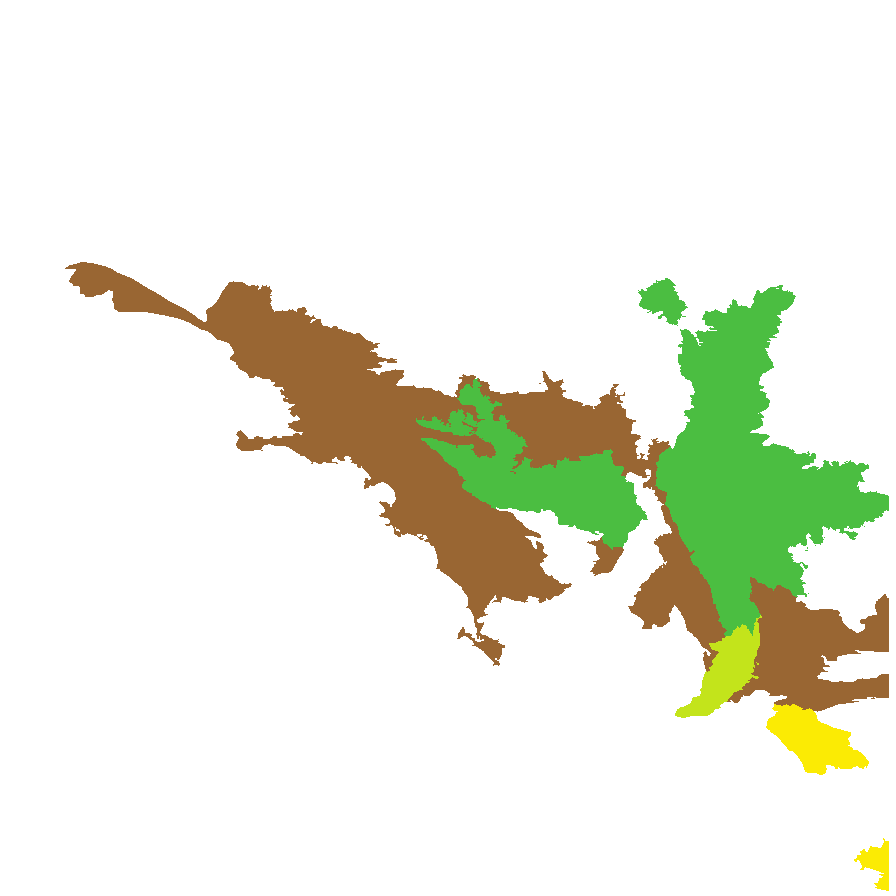Bristly Cloak-fern
Display all 6 images






Regional Species Conservation Assessments per IBRA subregion.


Least concern
Near threatened
Rare
Vulnerable
Endangered
Critically endangered
Extinct
Data deficient
Adelaide
Arkaroola
Ceduna
Coober Pedy
Hawker
Innamincka
Marla
Marree
Mount Gambier
Oodnadatta
Renmark
Wudinna
Keith
Yunta
Display IBRA region text
| Glenelg Plain (NCP02) | Naracoorte Coastal Plain | Vulnerable (IUCN: VU D2) [checked Bchinnock - near Donovans Landing, rock cleft] |
| Tintinara (NCP04) | | Vulnerable (IUCN: VU D2) [checked Bchinnock - granite outcrops, Mt Boothby] |
| Fleurieu (KAN02) | Kanmantoo | Near Threatened [localised; lives in rock ledges, dry areas, skeletal soils; not accessible to stock; should be more records here] |
| Mount Lofty Ranges (FLB01) | Flinders Lofty Block | Near Threatened [localised; lives in rock ledges, dry areas, skeletal soils; not accessible to stock] |
| Broughton (FLB02) | | Least Concern [In hilly areas, rock crevices] |
| Olary Spur (FLB03) | | Least Concern [In hilly areas, rock crevices] |
| Southern Flinders (FLB04) | | Least Concern [In hilly areas, rock crevices] |
| Northern Flinders (FLB05) | | Least Concern |
| Central Flinders (FLB06) | | Least Concern |
| St Vincent (EYB02) | Eyre Yorke Block | Rare (IUCN: RA d(i,ii)) (Probable Decline) |
| Talia (EYB04) | | Rare (IUCN: RA d(ii)) |
| Eyre Mallee (EYB05) | | Rare (IUCN: RA d(ii)) |
| Murray Mallee (MDD02) | Murray Darling Depression | Rare (IUCN: RA d(i,ii)) [edge of range] |
| Braemer (MDD07) | | Least Concern [In hilly areas, rock crevices] |
| Myall Plains (GAW01) | Gawler | Least Concern [occurs in rocky areas] |
| Gawler Volcanics (GAW02) | | Least Concern [occurs in rocky areas] |
| Gawler Lakes (GAW03) | | Rare (IUCN: RA d(ii)) |
| Yellabinna (GVD06) | Great Victoria Desert | Rare (IUCN: RA d(ii)) |
| 2 of 4 subregions | Naracoorte Coastal Plain | Vulnerable |
| Fleurieu (KAN02) | Kanmantoo | Near Threatened [localised; lives in rock ledges, dry areas, skeletal soils; not accessible to stock; should be more records here] |
| 6 of 6 subregions | Flinders Lofty Block | Least Concern , Near Threatened |
| 3 of 5 subregions | Eyre Yorke Block | Rare |
| 2 of 6 subregions | Murray Darling Depression | Least Concern , Rare |
| 3 of 8 subregions | Gawler | Least Concern , Rare |
| Yellabinna (GVD06) | Great Victoria Desert | Rare (IUCN: RA d(ii)) |
Botanical art
Kath Alcock paintings: 2
Prior names
Notholaena distans
Etymology
Cheilanthes from the Greek 'cheilos' meaning a lip and 'anthos' meaning a flower, alluding to the lip-like indusium (thin membrane covering the sorus). Distans from Latin meaning distant, referring to the widely spaced female flowers.
Distribution and status
Found in the southern part of South Australia, growing in rock crevices or on open banks in mountain ranges and smaller hills in drier parts. Also found in all states except for the Northern Territory (and New Zealand and New Caledonia). Native. Common in South Australia. Rare in Tasmania. Common in the other States.
Herbarium regions: Flinders Ranges, Eastern, Eyre Peninsula, Northern Lofty, Murray, Southern Lofty, South Eastern, Green Adelaide
NRM regions: Adelaide and Mount Lofty Ranges, Eyre Peninsula, Northern and Yorke, South Australian Arid Lands, South Australian Murray-Darling Basin, South East
AVH map: SA distribution map (external link)
Plant description
Slow-creeping rhizomatous fern with red-brown or dark brown, hairy stems. Fronds clustered near tip of rhizome, stiffly erect, usually small, hairy. Lamina narrowly oblong, 2-pinnate, dull and dark green. Pinnae well separated along rachis with lower surface moderately to densely clad in pale, flat scales and upper surface with or without scattered, long, white hairs. Fruits are sori (spores) on the underside margins of the fronds between the lobes, protected by the recurved margins. Seeds very fine dark brown, spherical spores.
Seed collection and propagation
Look under the fronds and collect ones with spores and place in a seal paper bags to prevent spores from fulling out. Leave fronds in the paper bag to dry. The spores will fall off naturally or give the fronds a gentle shake. Use a very fine sieve to separate any unwanted material. Be careful as the spores are very fine. Store spores in an air tight container in a cool and dry place or in a -20oC freezer.







